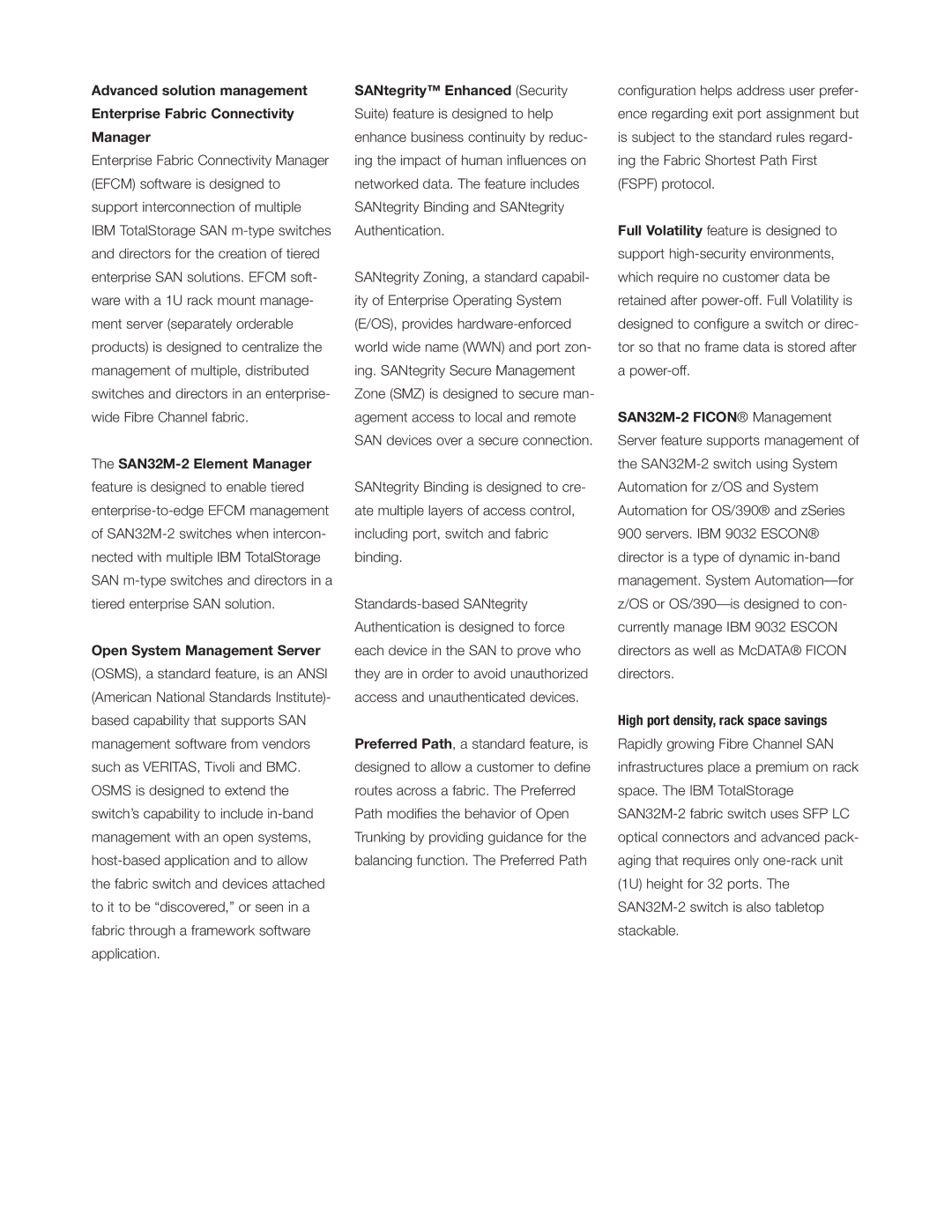SAN32M-2 specifications
The IBM SAN32M-2 is a high-performance, versatile storage area network (SAN) switch designed to provide enterprise-class connectivity and scalability for data center environments. It is part of IBM's extensive portfolio of storage networking solutions, and it excels in meeting the demands of modern storage infrastructures, ensuring seamless data flow, and providing robust management capabilities.One of the standout features of the IBM SAN32M-2 is its impressive 32 Gbps Fibre Channel ports, which offer high bandwidth for data-intensive applications. This speed ensures that organizations can efficiently manage large volumes of data, accelerating application performance and improving overall system responsiveness. The switch can support up to 128 ports, allowing for a high degree of scalability, which is essential for growing data centers that require flexible expansion.
In addition to its high-speed capabilities, the IBM SAN32M-2 incorporates intelligent caching technologies that enhance data access times and reduce latency. The switch's advanced routing capabilities optimize the path for data packets, ensuring efficient communication among connected devices. The inclusion of features like dedicated management ports further enhances the ease of network management, allowing administrators to monitor and configure the switch without affecting data traffic.
Furthermore, the IBM SAN32M-2 features comprehensive security protocols, protecting critical data against unauthorized access. This is particularly important in environments that require strict compliance with regulations and industry standards. The switch also supports virtualization technologies, enabling organizations to maximize their existing resources and streamline workflows by integrating multiple virtual machines and storage devices seamlessly.
The ease of integration is another defining characteristic of the IBM SAN32M-2. It is designed to work with a wide array of storage solutions, ensuring compatibility with both IBM and third-party products. This flexibility allows businesses to customize their storage networks according to unique requirements without being locked into a specific vendor.
With robust support for advanced features such as SFP and SFP+ transceivers, the IBM SAN32M-2 is equipped to handle various bandwidth requirements. Its built-in diagnostics and monitoring tools simplify problem identification, reducing downtime and enhancing overall operational efficiency.
In conclusion, the IBM SAN32M-2 is a powerful SAN switch that combines high-speed performance, scalability, and advanced management features, making it an ideal choice for enterprises seeking to optimize their storage solutions while ensuring future-proof infrastructure. Its commitment to security, compatibility, and ease of management positions it as a critical component in the data centers of today and tomorrow.
